David and I travelled to China last month, in main part to work with the Dragons Garden factory management on a program of improvements for 2025. Before travelling to Shandong we had the opportunity to visit Gansu province. The geographic centre of China is in Gansu and the province then stretches out towards the northwest, curling around and between the Qinghai-Tibet and Loess Plateaus. Several of the silk road routes pass through Gansu, the geographic corridor from central China out to the northwest, forming an overland link between China and the rest of the Eurasian landmass. Gansu therefore has a rich history, and even during this short visit we could see plenty of evidence of this – from the architecture (mosques and Tibetan temples), ancient Buddhist sites, to the resin dinosaurs lining the roads and pointing visitors in the direction of paleontological finds.
We were in Gansu to investigate the opportunities for growing raspberries in this province, and were based in Southern Gansu, in Lanzhou, the capital city. My first impression was how warm it was for late Autumn, and how, dry, hazy and bright. The hazy air probably should not have been a surprise, considering the proximity of the Gobi desert. Southern Gansu has a temperate continental climate, with summer temperatures rarely exceeding 25C, and winter temperatures around -5C at the lowest. Most of the rain falls in the summer months, with the climate dry and sunny. So, can raspberry cultivation be successful here?
On our first day we headed straight out of Lanzhou and into the countryside, crossing the Yellow River. The landscape around Lanzhou is hilly, with the earth silty and friable with a dry crust and much evidence of wind erosion. Many hills have been cut into terraces and trees planted. This is an anti-erosion strategy, with government grants available to pay for this work.
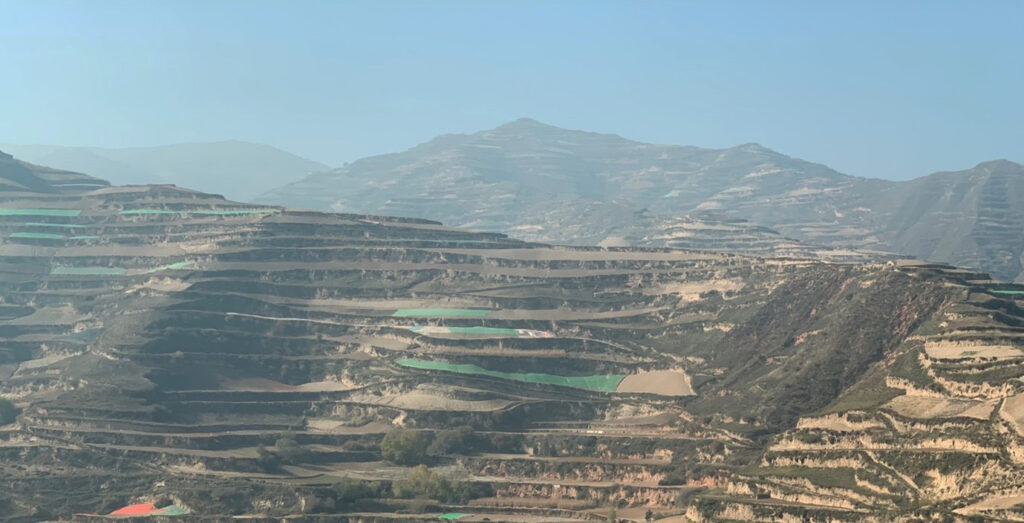
There are crops growing on the terraces, some wheat, some areas under mulch. Lots of fruit and vegetables for sale by the road attest that this is a fertile area.
Despite the arid nature of this landscape there is plenty of water from the Yellow river and its tributaries and we headed into the mountains and river valleys to find the raspberry fields.
Cultivation was both open-field and under polytunnels. The warmth in the polytunnels was quite something even in mid-November, and the plants were still fruiting. We learnt from the farmers that yields are very good, with two crops per year possible from polytunnel-grown canes. The position between the mountains must protect the dry soil from wind erosion.
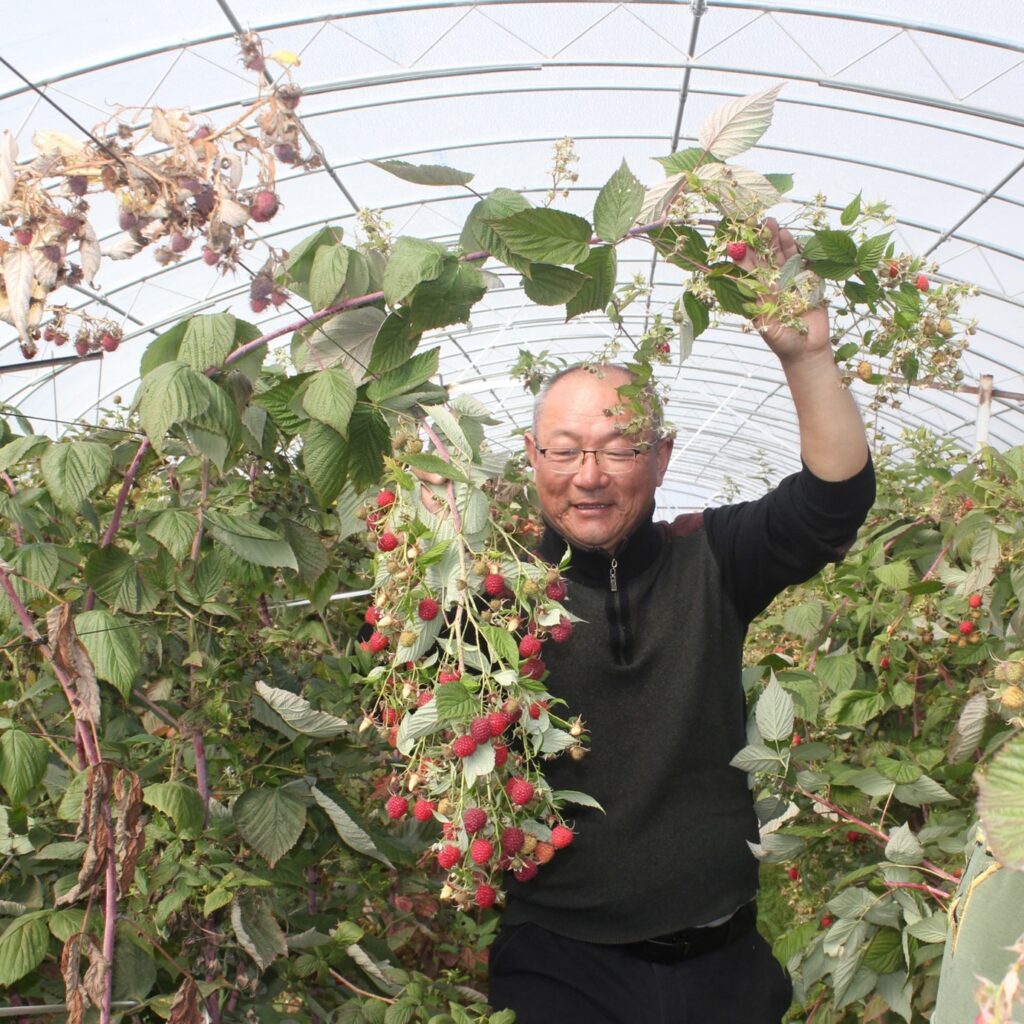
After visiting the plantations we met more raspberry farmers for lunch and discussed raspberry cultivation and processing in China, across different provinces. Heilongjiang and Liaoning are still the biggest producers, but we were advised that Gansu raspberries are the best in China. The Gansu farmers might be biased, but they might also be correct! We were certainly impressed with what we saw.
Gansu is famed for hand-pulled noodles, and sanpaotai, a mix of tea, fruit and herbs that originated with the Hui Muslim minority here. Maybe in a few years Gansu will also be famed for its superb raspberries. Berry Ltd and Dragons Garden are in an excellent position to work with Gansu raspberry farmers to introduce these fruits worldwide, and we are excited about this possibility.
After this trip to Gansu it was on to Qingdao, and a catch up visit with Dragons Garden. Dragons Garden factory improves every year, and it was great to see the latest developments, including a new building for processing dried fruit products.
The strawberry plants in the organic and in-conversion fields looked strong and healthy ahead of their winter dormancy, and the plants in the polytunnels were beginning to fruit ahead of the first crop in December. Around the Dragons Garden fields local villagers had stacked maize to dry. This will be used as animal feed through the winter. There was the first chill of winter winds setting in as the sun fell over the strawberry fields.
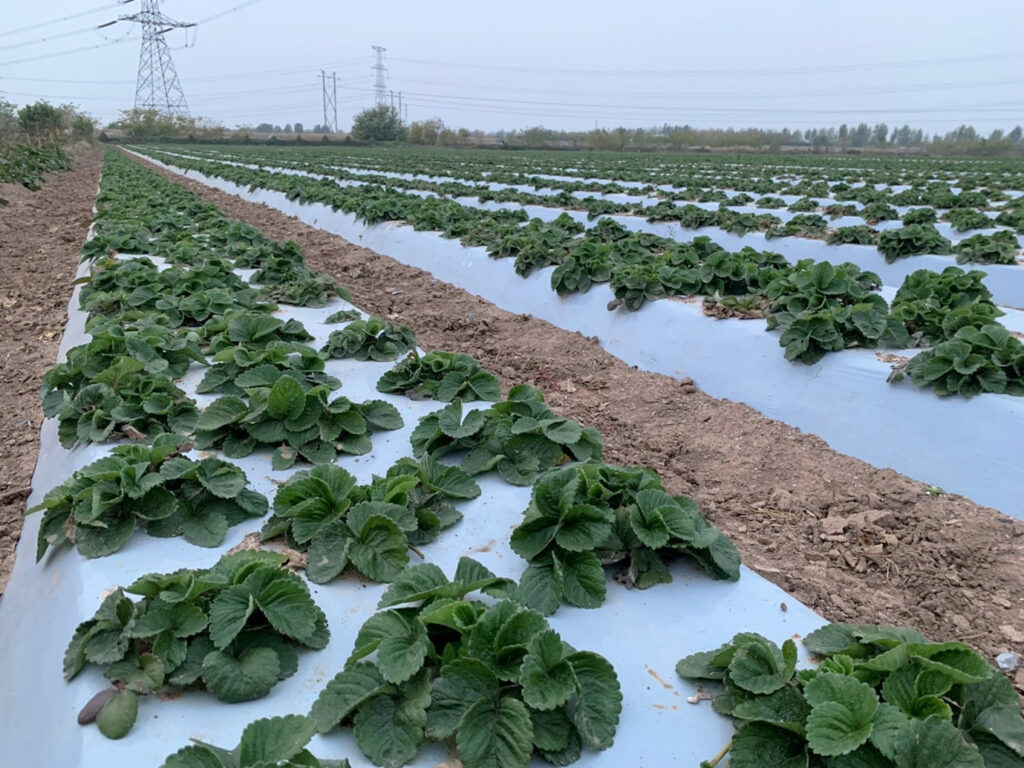
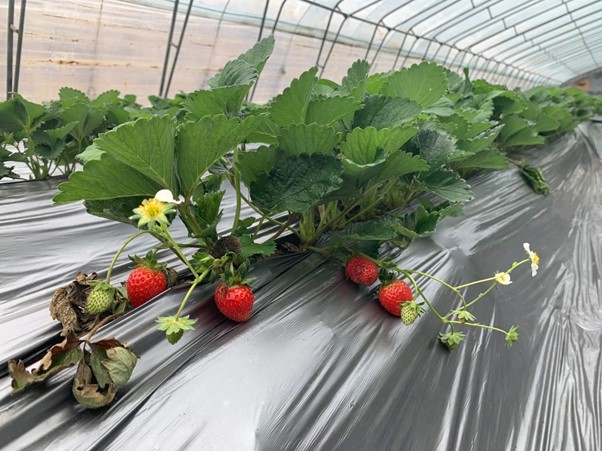
At the factory we worked with our colleagues from Dragons Garden’s management and technical teams on a plan of improvement for 2025. This is the first time we have put a formal plan in place in English; the concept of continuous improvement has served Dragons Garden well but is not necessarily so easy to present to customers. All agreed actions will be completed by spring 2025 and we will be pleased to share an update next year.
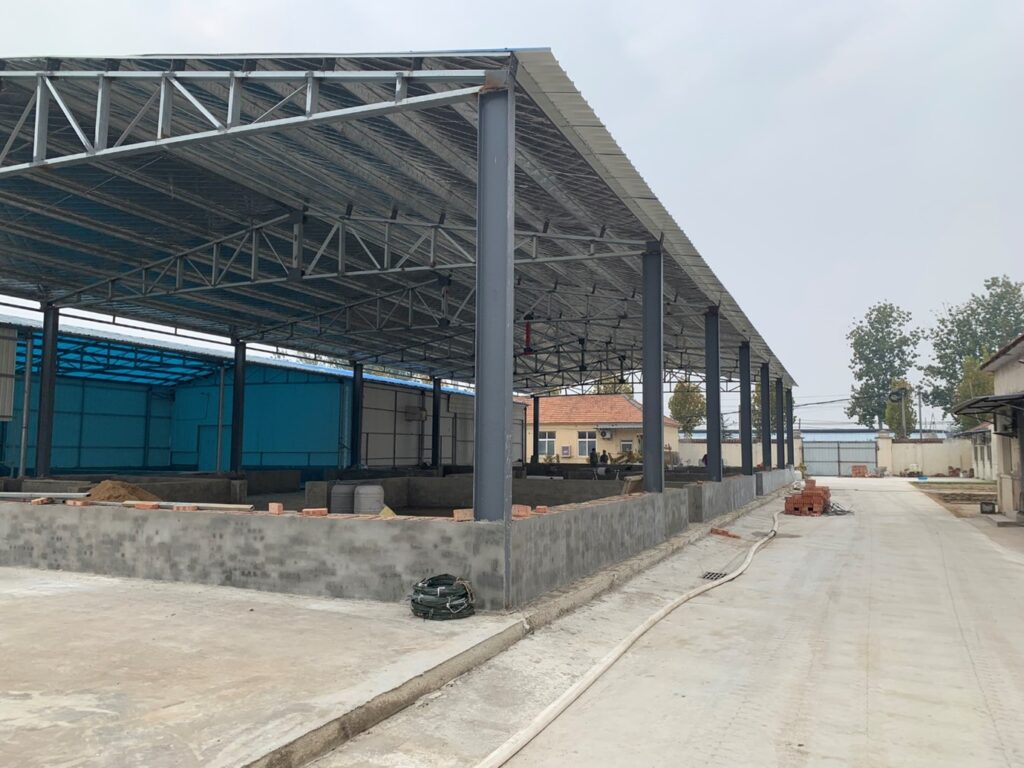
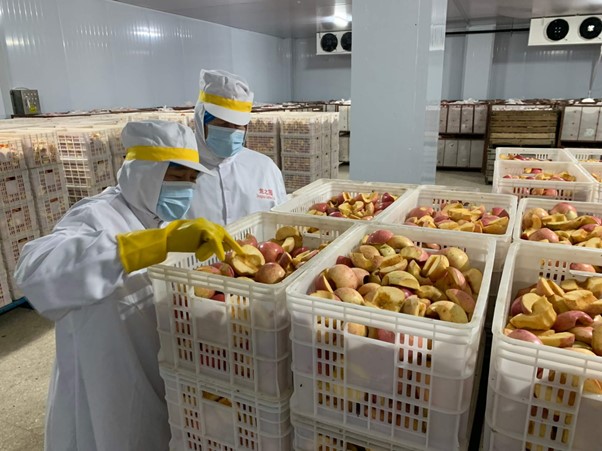
Lastly it was great to catch up with the Dragons Garden team, a cheerful, hardworking and dedicated group. I found out that the retirement age in China is 50, and quite a few staff are officially retired but wish to continue to work for the company. We intend to do some staff profiles in the new year as our Berry Ltd & Dragons Garden family are an interesting crew.
